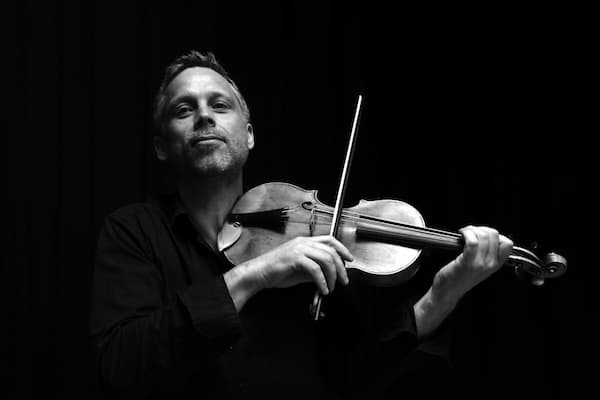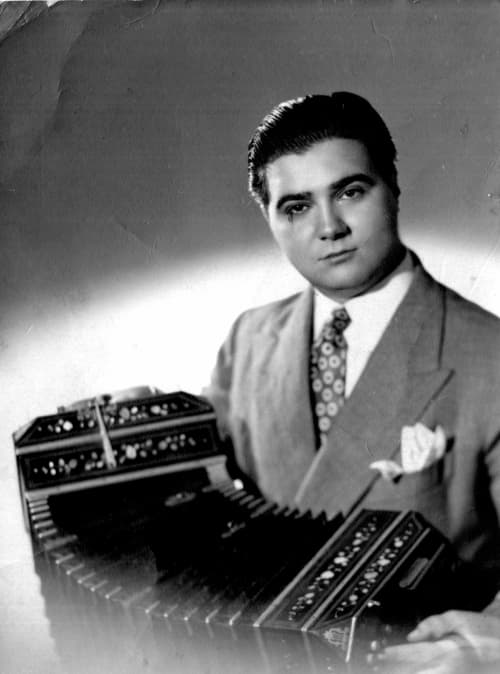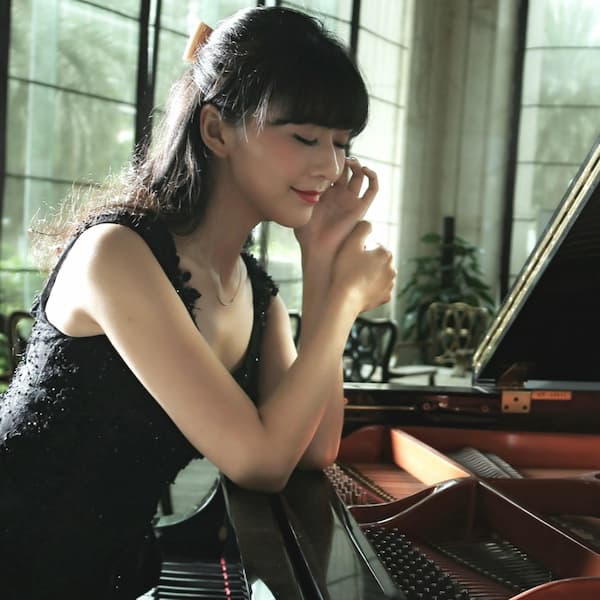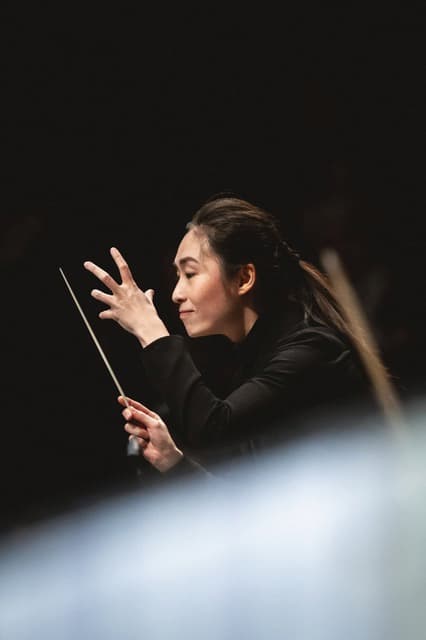How does a small-town Canadian boy settle in the UK and become a luthier, author, and painter? Michael Kearns, a violin maker and restorer, is one of three partners at Oxford Violins. With his colleagues, Mark Yakoushkin and Bruno Guastalla, Oxford Violins came into being in the spring of 1983.
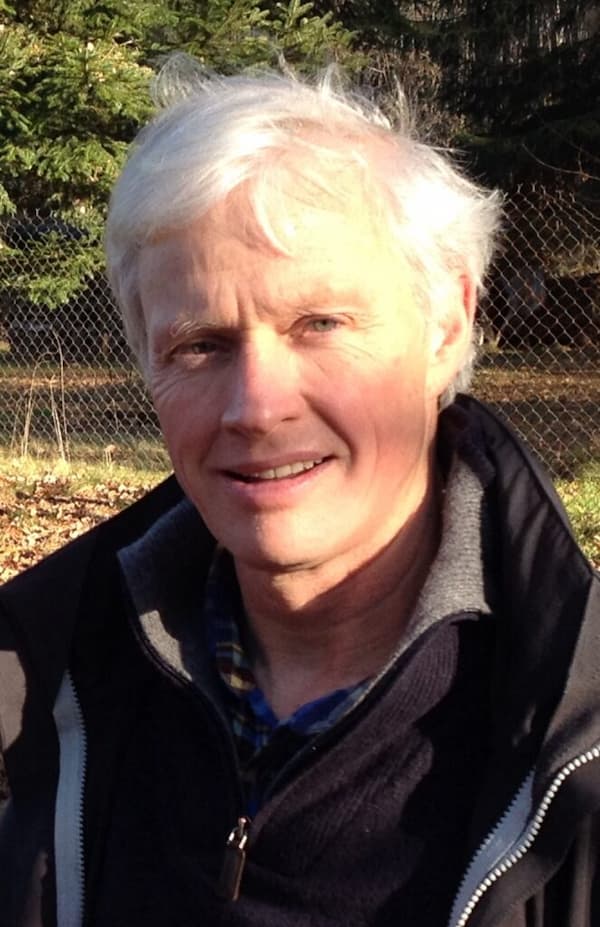
Michael Kearns
Kearns, in addition to making and taking care of instruments, has written a novel entitled Clinkerstone (Troubador Publishing UK) and another, Airthief, which will be released in February 2025. He has also painted thirty oil paintings. I was able to catch up with him and hear more about his endeavours.
I see you were born in Brandon, Manitoba, a town that has a population of 50,000 today. How did you fall in love with classical music?
I grew up on the Canadian Prairies. After finishing high school and considering a place to go to university, I took the decision to head north to work in a nickel mine. It was hard going, but I managed to get through the winter. I spent the summer travelling western Canada, and the following autumn, I decided to go to Europe.
While in England, entirely by chance, I met an Oxford don and his family, and he must have seen something in this nineteen-year-old seemingly lost soul. I had no idea what I was going to do with my life. He encouraged me to come back to Oxford once I’d finished my travels. Some months later, I took up the offer and was introduced to the world of literature and classical music. I had no experience with classical music, but he sat me down and played a recording of Dvořák New World Symphony (No. 9 in E minor).
Antonín Dvořák: Symphony No. 9 in E Minor, Op. 95, B. 178, “From the New World” – IV. Allegro con fuoco (Baltimore Symphony Orchestra; Marin Alsop, cond.)
I was flabbergasted. I began to attend concerts, listened to recordings, attended private chamber music performances, and went to lectures. These experiences introduced me to the great composers and raised my interest. When I came upon the very fine collection of stringed instruments at the Ashmolean Museum, I acquired a reader’s card at the Bodleian Library and began to educate myself on the history of the violin.
So, this inspired you to become a violin maker?
Yes. At age twenty, I entered the Newark School of Violin Making in Nottinghamshire. The school was established just a year before, and I was the first foreign student.

“Clinkerstone” by Michael Kearns
What are some of the biggest challenges you encounter in your instrument making?
It has always been a daunting undertaking to emulate the special quality that exists in the instruments of the Italian makers of the 17th and 18th centuries. There is no doubt that they had a great sense of sculptural form that, to my mind, plays a large part in what gives their instruments the unique and extraordinary sound players yearn for. In fact, even with modern technology, scientists have not been able to determine the mystery behind Stradivarius’s extraordinary instruments. I wanted to contribute to this great tradition of music-making, dating back five hundred years. It’s an incredibly rich and fascinating history.
How does making your own instrument differ from the adjustment and repair of an instrument made by another maker?
The two disciplines have different problems and challenges. With repairs, adjustments, and in-depth restorations, I am obviously dealing with what has already been made. In making my own instrument, I start with a blank sheet, or in this case a few pieces of seasoned wood – albeit with a long, impressive tradition behind me. Making a new instrument feels more naked. In some ways, even after years of experience, it doesn’t get any easier. We can recognise what makes a really good instrument, but translating it into your own work is something else.
What are some issues you’ve encountered while trying to restore an instrument?
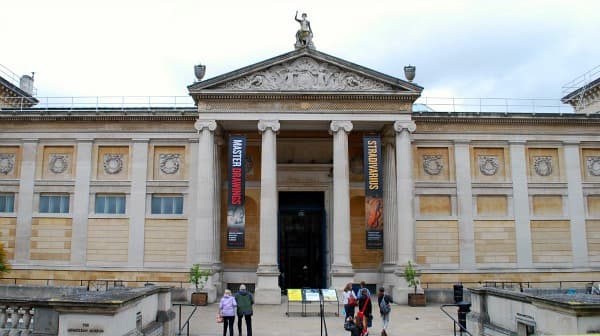
Oxford’s Ashmolean Museum
I have just finished putting back together a beautiful Neapolitan violin by Nicolas Gagliano, which had extensive water damage and staining that had to be teased out. Getting the back joint together, all in register and fitting well, has been a challenge.
It frequently happens that a musician will come in with a sound problem. I try to keep in mind that they live with their instrument every day, and in the case of a professional, they know when it is not sounding good. They might blame themselves, but in my experience, it’s likely an issue with the instrument. Violins are affected by changes in humidity and temperature, especially as the seasons change, and that can affect the way they sound. An instrument might be “out of adjustment”, and a slight change in the positioning of the sound post or bridge can make a huge difference. Even the type of strings a musician might use can change the sound.
Sometimes surprising things can happen. I recall when a customer brought in a violin case with the words, ‘There is something wrong with this violin.’ When we opened the case, the entire violin was apart – absolutely every piece was detached, like some rattling skeleton . . . and we just broke down laughing.
How do you go about authenticating an instrument?
Years of experience in handling old instruments on a regular basis is essential, along with a good eye and a good memory. Having knowledgeable colleagues is also invaluable. And there are now some good books that can help with reference.
That said, the history of the violin family and its makers is a rich and varied subject (naming bows is a separate field.) Each country, region, and time has its own set of characteristics. The origin of some instruments is obvious if you ‘know your onions’, while others need further study. Still, others can remain a mystery—those that don’t fit into any known school of making. When it’s hard to pinpoint the origin of an instrument, you can try to work out what it isn’t and narrow it down that way. Today, there is the relatively new discipline of dendrochronology, which is another tool for establishing or discounting a certain time. Through high-resolution photos, the age of the wood and the forest where the wood came from can be determined, which can then narrow down the likely makers.
Can you describe how you became involved with the Donegal Violin Trust, and what they and the National School in Letterfrack Connemara have accomplished?
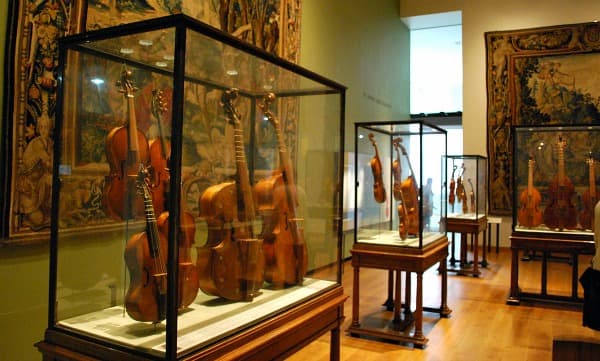
Ashmolean Museum’s stringed instrument collection
I have written fictional prose for quite a few years. The main protagonist of my novel Clinkerstone is an Irish fiddler. When I was developing the story, I travelled to Ireland on several occasions to do research. While there, I met the fiddler Paddy Glackin, who sent me up to Donegal. There I met Kevin McKee, who runs the Donegal Trust. I was surprised at the sad state of the instruments these kids were learning on. I realised I could improve things. Whether an instrument is a common student violin, or a Stradivari, it must be set up well – pegs that work, decent strings, a well-placed soundpost, a bridge that fits with a comfortable string action. I collected about ten instruments and properly set them up with functioning bows, and I donated them to the trust – so, essentially, the instruments comprise a lending pool. Later, I did a similar thing in Letterfrack, although with fewer instruments.
What prompted you to write a novel – a musical drama if you will?
It started with a rather vague notion of writing a story in which music would be threaded into plot and character, like a separate reality or language that runs parallel with the action. I imagined this relationship would transpire in a way that I had never really experienced before. I made the decision to commission a piano sonata, a three-movement piece that could be played on the concert platform, which would become key to unravelling the scenario. The composer Adam Gorb, Head of School of Composition at the Royal Northern College of Music in Manchester, took up the challenge, and he absorbed the influences and the period of the composer in the novel to write his sonata.
Adam Gorb: 24 Preludes – No. 4 Madam I’m Adam: Prestissimo (Clare Hammond, piano)
How did your research in Ireland enhance your story?
As mentioned, it did initiate the whole violin lending trust experience. As far as the story goes, it brought me much closer to the culture of Sean Gallagher – the main protagonist in the book—essential if you are attempting to be authentic. Hearing Paddy Glackin and other musicians in the pubs helped me to better understand the fiddling tradition, especially given Sean was to be an exceptional fiddler. And the sheer beauty of Ireland’s west coast and the character of the people gets into you. It all helped when writing the book.
Paddy Glackin
When writing, one often will draw on personal experiences. A vivid and harrowing passage in your book is when Gallagher works for a few weeks in a mine. Did some of what you describe happen to you?
Pretty much all the mining section is based on my experiences underground as a young man fresh out of high school. To name a few incidents: the lamp-man sending the novice off with a bum lamp, suffering through complete and total blackness in a harrowing situation, the experience for days on end in the dead of winter, going to work early in the dark, descending underground into the dark, coming up to meet the darkness of the evening, and the story of the lifers who cut corners in the mine…It was an alien world. The coming days of spring, when I could move on, was a relief, even though I didn’t know what I’d move on to.
Other vivid passages are of clearing the garden at the Landray mansion. Do you draw on personal horticultural knowledge?
The story is an invention enhanced by personal experience. I’m fortunate to have been part of restoring and maintaining a beautiful garden in the Cotswolds here in the UK. I’ve done this for many years, along with a group of friends. I draw on this experience in Clinkerstone. I find that invention doesn’t grow out of thin air but rather from a desire to make sense of things. I’m reminded of something the poet T.S. Eliot once wrote – “We had the experience but missed the meaning, And approach to the meaning restores the experience. In a different form. . .”
The story is an adventure, a fantasy with some quirky, extraordinary plot twists, dream sequences, and bizarre scenarios. But the music triumphs. In an interview for the Medium with Jake Frankel, (November 2024) you stated, “In my experience, listening to music can be a very rich and mysterious experience. It can lift the human spirit, and perhaps in these troubled times, this is needed more than ever.”
I can’t think of a more fitting thought with which to leave our readers, accompanied by Vaughan Williams’ The Lark Ascending a stunning piece inspired by a George Meredith poem telling the tale of a skylark singing a beautiful, romantic, and soaring song. It was written just after World War I broke out. Performed here by violinist James Ehnes and the Royal Liverpool Symphony.
For more of the best in classical music, sign up for our E-Newsletter
Ralph Vaughan Williams: The Lark Ascending (James Ehnes, violin; Royal Liverpool Philharmonic Orchestra; Andrew Manze, cond.)

